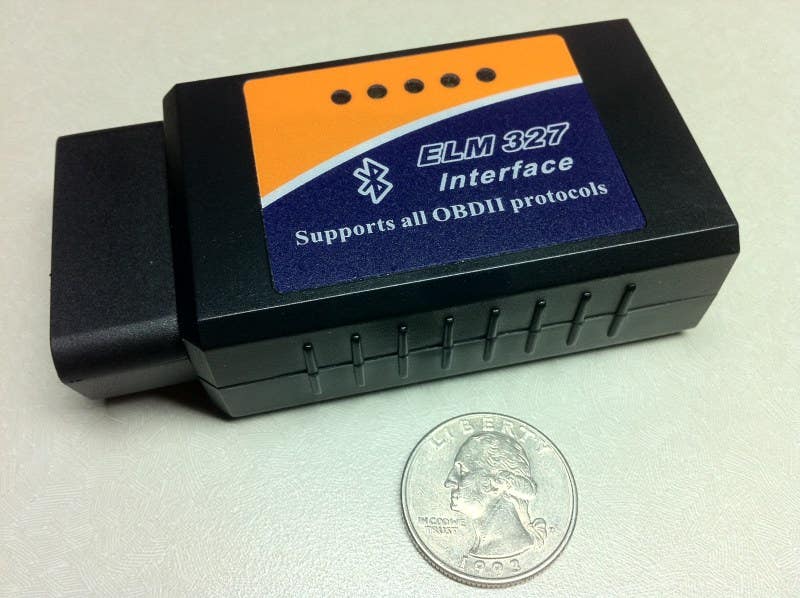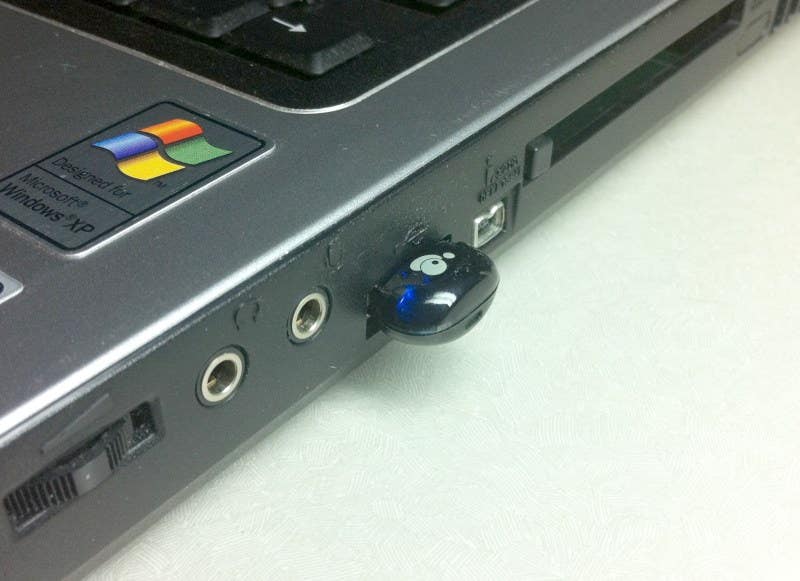With today's computer-controlled cars, a good scan tool can be very handy if you do your own maintenance. But even drivers who don't tinker under the hood can benefit from having a scan tool. If you want to find out what that check engine light means, have the ability to clear the codes and turn off the light, then one of these gadgets can be invaluable. You can verify the repair shop has made the right diagnosis and make sure the problem was fixed properly.
I was browsing through Amazon.com looking at scan tools when I spotted several of these inexpensive ELM327-based units that connect the OBD II diagnostic port to your laptop or netbook. Some of them connect to the computer using a USB cable but the one that caught my eye was the wireless version that pairs up with the computer using Bluetooth. With the proper app, you can even use a Bluetooth-enabled smart phone! Most of these units sell for less than $40, and a Bluetooth USB adapter can be had for less than $2, all with free shipping from Amazon. The one I chose was this one, which is now selling for $27.98:
![Image]()
This Bluetooth adapter was $2:
![Image]()
Since it was so cheap, I got it and another one that seemed to have better reviews for $12.84:
![Image]()
Turns out both of them work fine, so I plugged one in my laptop and the other in my desktop machine.
After a few days, the package arrived and here's what I got:
![Image]()
The packaging is minimal--each unit comes with a small CD with software and not much else. No written documentation at all with the scanner, and not much with the Bluetooth adapter, but, as it turns out, everything is pretty much plug 'n play. The ELM327 scanner is about the size of a matchbox with 5 unlabeled LED's on top that seem to correspond to power, transmit data, receive data, etc., just like a modem. The ELM327 is a chip made by ELM Electronics that converts the OBD II data to standard RS-232 serial bus data that any computer can understand.
![Image]()
![Image]()
If you have a laptop, netbook, or smart phone with Bluetooth, you're good to go. Unfortunately, iPhone users like me are out of luck because Apple has crippled the Bluetooth functionality, but if you've got an Android-based phone, check out an app called Torque (Torque — OBD2 Performance and Diagnostics for your Vehicle), it gets great reviews. Since my old Toshiba laptop doesn't have BT, I got the adapter. Before plugging it in, it's necessary to install the software on the cd. If you don't, Windows will detect it and install simple BT drivers that don't allow you to do much. After installing the software, plug in the adapter and it should be recognized and configured:
![Image]()
The software automatically set up a virtual serial port (COM12) for the BT to use, but I went ahead and configured another one as COM5.
Now it's time to plug the ELM327 scanner into the OBD II port:
![Image]()
![Image]()
When you plug it in, the lights cycle through a self-test mode until only the red LED is lit up. Note that the port is powered up at all times, so don't leave the scanner plugged in permanently or it will eventually drain your battery. The way the port is mounted on the RAV4, you can't see the lights very well but they aren't really necessary. Now you need to pair up the BT on the computer to the scanner. With this BT software you choose "Add a Bluetooth Device" and it will search for devices in the area. In my case it found the BluLogic in the RAV, my iPhone, and a device called "CBT Dev B" which is the scanner. Choose it and if the software asks for a passcode, enter 1234. This passcode was nowhere to be found on the packaging or disc, I think I found it in the Amazon reviews. Once the pairing is done, the CBT Dev B will show up as one of your BT connections. You should specify what COM port you want it to use, in my case COM5. Next we'll install the scanner software on the laptop and see how it works.
I was browsing through Amazon.com looking at scan tools when I spotted several of these inexpensive ELM327-based units that connect the OBD II diagnostic port to your laptop or netbook. Some of them connect to the computer using a USB cable but the one that caught my eye was the wireless version that pairs up with the computer using Bluetooth. With the proper app, you can even use a Bluetooth-enabled smart phone! Most of these units sell for less than $40, and a Bluetooth USB adapter can be had for less than $2, all with free shipping from Amazon. The one I chose was this one, which is now selling for $27.98:
This Bluetooth adapter was $2:
Since it was so cheap, I got it and another one that seemed to have better reviews for $12.84:
Turns out both of them work fine, so I plugged one in my laptop and the other in my desktop machine.
After a few days, the package arrived and here's what I got:

The packaging is minimal--each unit comes with a small CD with software and not much else. No written documentation at all with the scanner, and not much with the Bluetooth adapter, but, as it turns out, everything is pretty much plug 'n play. The ELM327 scanner is about the size of a matchbox with 5 unlabeled LED's on top that seem to correspond to power, transmit data, receive data, etc., just like a modem. The ELM327 is a chip made by ELM Electronics that converts the OBD II data to standard RS-232 serial bus data that any computer can understand.


If you have a laptop, netbook, or smart phone with Bluetooth, you're good to go. Unfortunately, iPhone users like me are out of luck because Apple has crippled the Bluetooth functionality, but if you've got an Android-based phone, check out an app called Torque (Torque — OBD2 Performance and Diagnostics for your Vehicle), it gets great reviews. Since my old Toshiba laptop doesn't have BT, I got the adapter. Before plugging it in, it's necessary to install the software on the cd. If you don't, Windows will detect it and install simple BT drivers that don't allow you to do much. After installing the software, plug in the adapter and it should be recognized and configured:

The software automatically set up a virtual serial port (COM12) for the BT to use, but I went ahead and configured another one as COM5.
Now it's time to plug the ELM327 scanner into the OBD II port:


When you plug it in, the lights cycle through a self-test mode until only the red LED is lit up. Note that the port is powered up at all times, so don't leave the scanner plugged in permanently or it will eventually drain your battery. The way the port is mounted on the RAV4, you can't see the lights very well but they aren't really necessary. Now you need to pair up the BT on the computer to the scanner. With this BT software you choose "Add a Bluetooth Device" and it will search for devices in the area. In my case it found the BluLogic in the RAV, my iPhone, and a device called "CBT Dev B" which is the scanner. Choose it and if the software asks for a passcode, enter 1234. This passcode was nowhere to be found on the packaging or disc, I think I found it in the Amazon reviews. Once the pairing is done, the CBT Dev B will show up as one of your BT connections. You should specify what COM port you want it to use, in my case COM5. Next we'll install the scanner software on the laptop and see how it works.























